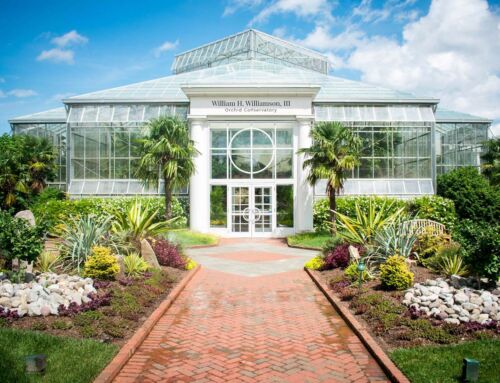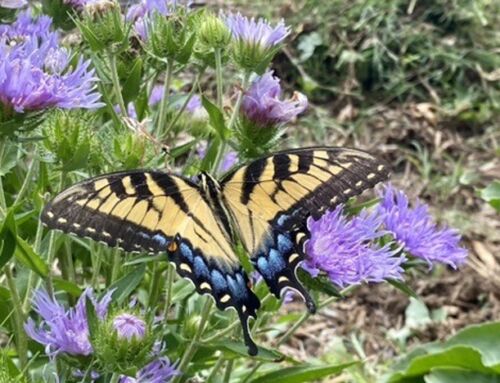When the cold weather settles in, many people think of a visit to the garden as a thing of the past or future. In its current state, frostbitten and dormant, there seems little to offer except a few bare branches. However, winter can be a magical time at the garden, offering new textures, colors and experiences that are often overlooked. In fact, winter is one of my favorite times at DSBG. Why, you ask? On a recent walk through the garden I was reminded of all the things I love most about the Garden in winter.
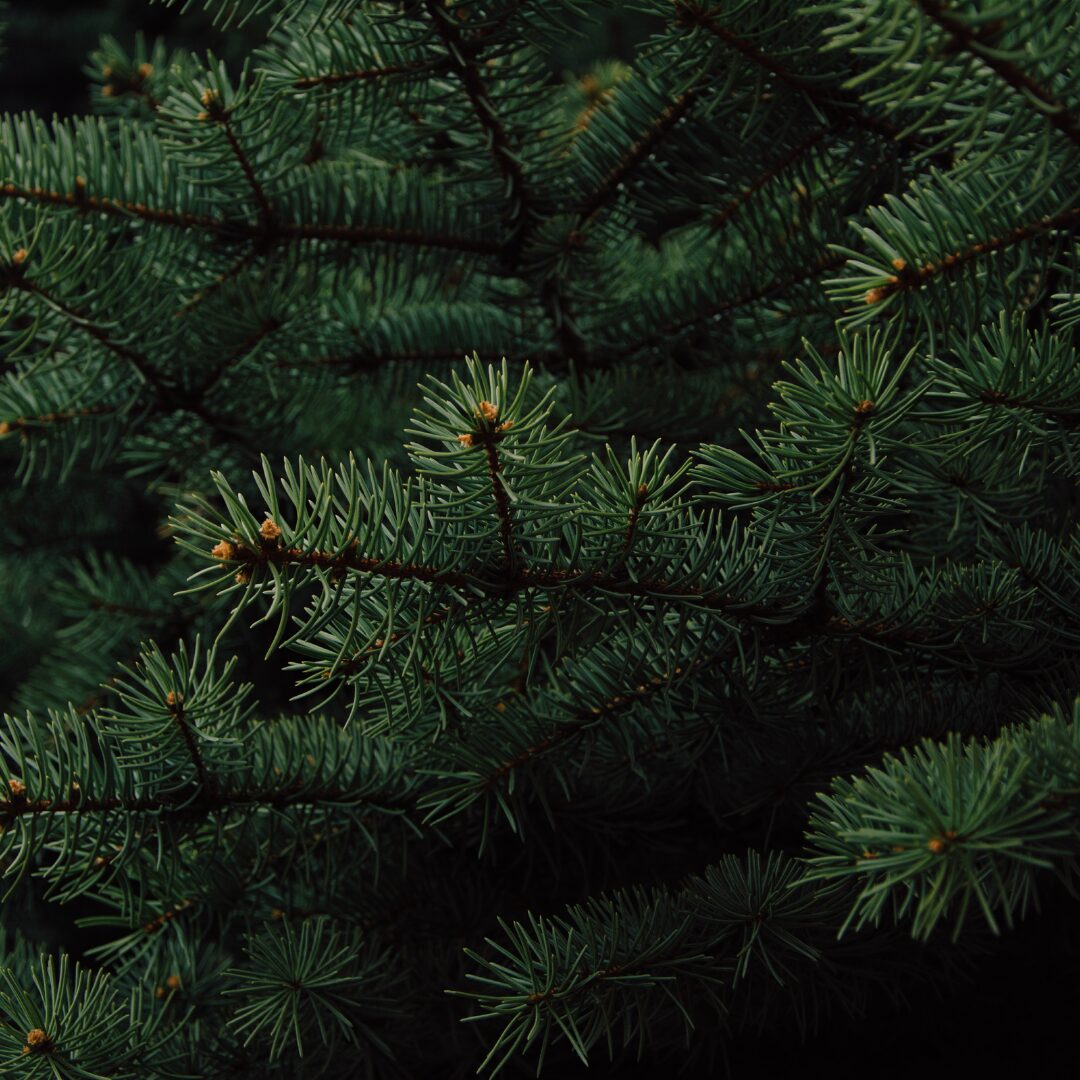
While deciduous trees shed their leaves, evergreens stand tall, providing structure and year-round greenery. These conifers are essential for winter interest, offering a sense of continuity and life throughout the colder months. From the dark, glossy foliage of Camellias to the feathery texture of pines and junipers, evergreens create a calming, consistent backdrop that tends to go unnoticed in the warmer months. Many evergreens also produce cones or berries, adding extra visual appeal and even attracting wildlife. Have you ever witnessed a flock (called a museum or ear-full) of cedar waxwings descending on an Eastern cedar in winter to feast on its juniper berries? It’s an incredible sight to behold!
Other shrubs and trees, such as hollies, viburnums, elderberries, and certain types of dogwoods, also bear colorful fruits in winter that can be found throughout the garden, provide visual contrast against our winter sky (sunny or gray), and offer food sources for birds and other wildlife. Without the cover of deciduous trees, winter is a great time for spotting non-migratory birds and other wildlife in the garden.
Take a stroll through our Piedmont Prairie to discover the beautiful textures of ornamental grasses, such as Northern River Oats (Chasmanthium latifolium) or switchgrass (Panicum virgatum). These native grasses offer beautiful form and movement in the wind. Their metallic seed heads sway gently in the breeze, creating a dynamic, ever-changing display of texture and sound. Even when they’re covered in frost, these grasses maintain their structural integrity, providing visual interest through the winter months. You’ll also see seed heads from perennials like echinacea, and rudbeckia also remain intact during the winter. These dried blooms provide architectural beauty, offering delicate forms that contrast nicely with the starkness of winter. As the seeds dry, they attract birds seeking food during the colder months.
During winter, the branches of deciduous trees and shrubs become more prominent, revealing their sculptural shapes. Many trees, such as the coral bark maples (Acer palmatum ‘Sango-kaku’), that can be found in our Four Seasons Garden, have colorful bark that becomes more pronounced after losing their leaves. The deep reds of the branches create a striking contrast against a backdrop of snow or even the more neutral tones of a grey winter sky.
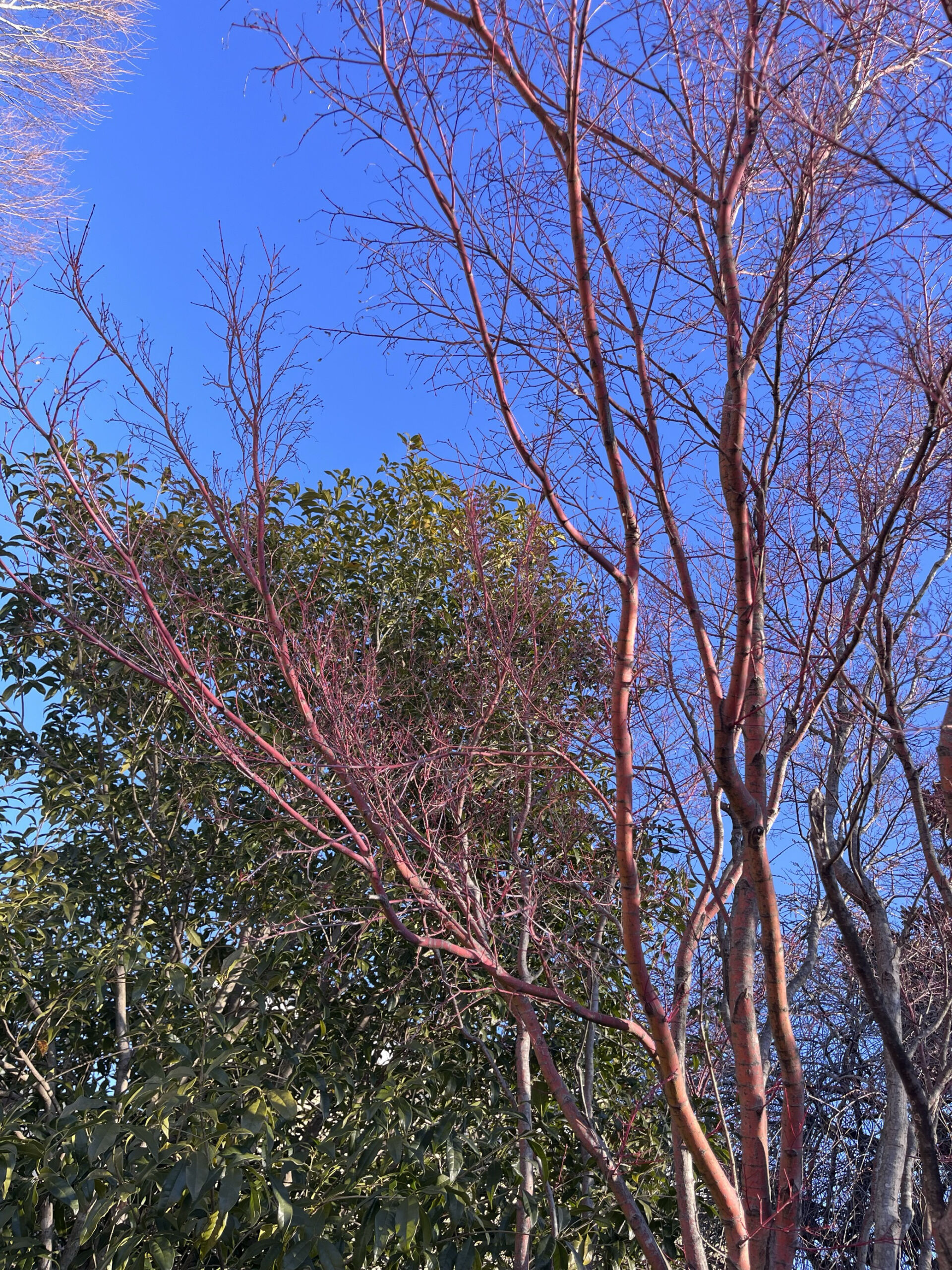
Coral Bark Maple (Photo by Allyssa Boerngen, Garden Horticulturist)
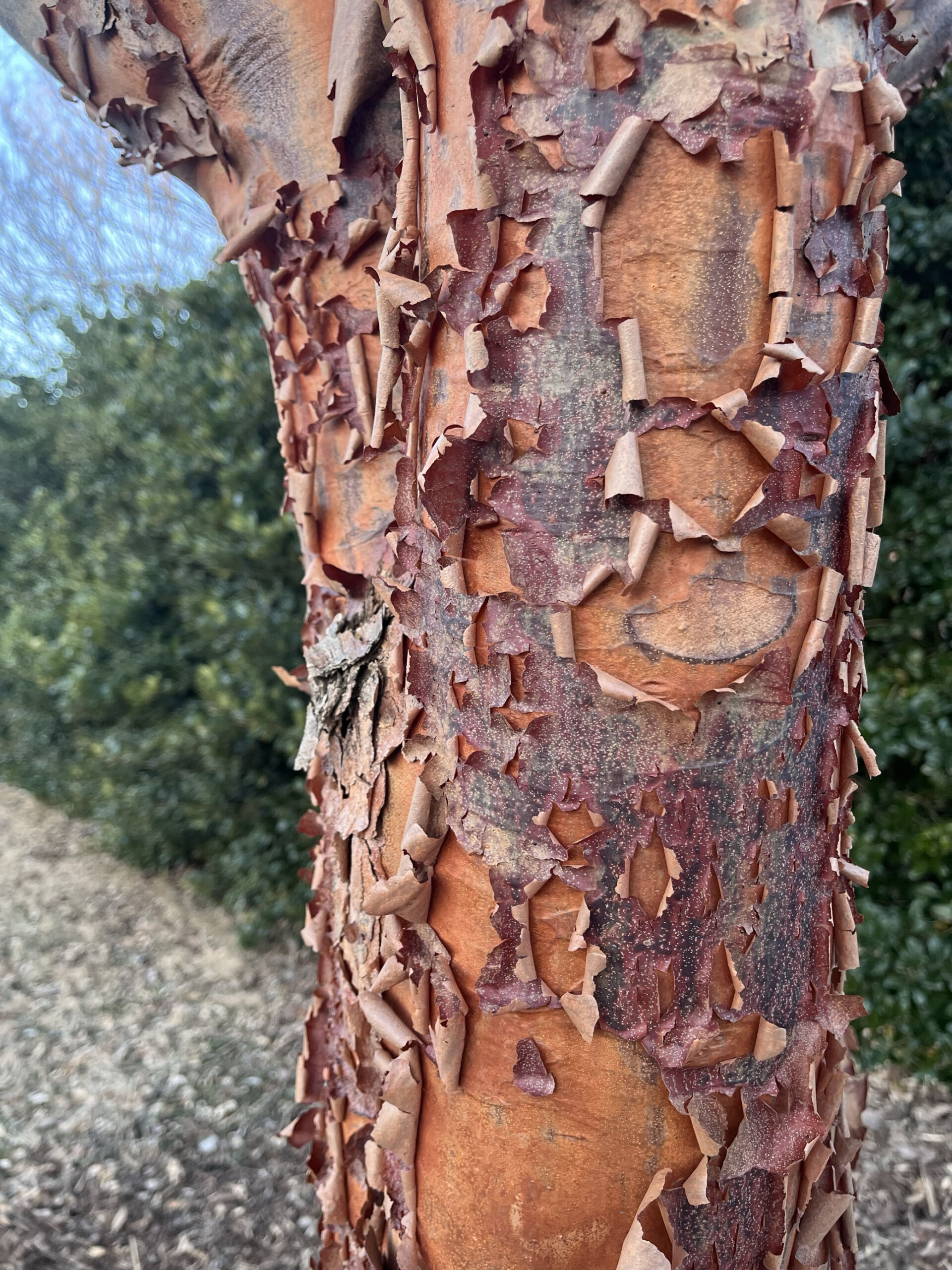
Paper Bark Maple (Photo by Allyssa Boergnen, Garden Horticulturist)
Other trees, such as the paperbark maple (Acer griseum), have interesting bark textures that peel away in strips, revealing a smoother layer underneath. These trees create a dynamic and visually rich effect even when bare of leaves. There are paperbark maples in Four Seasons Garden and a beautiful specimen across from our Butterly Bungalow on Tram Road.
While most plants lie dormant in winter, a few hardy varieties still bloom, offering unexpected splashes of color during the coldest months. Snowdrops (Galanthus) are among the first to appear, often pushing their delicate white petals through the frost. Another favorite to look for is the daffodil (Narcissus). With thousands planted throughout the garden, their cheery yellow blooms will begin to open in February, signaling that spring is on the horizon!
Winter-flowering shrubs are a fantastic way to add both fragrance and color to the garden during the colder months. One of my personal favorites is Paperbush (Edgeworthia chrysantha). Its white flower buds transform into a buttery yellow by February, blooming before the leaves appear. The fragrance is lovely—an unexpected treat in a quiet, winter garden. These hardy shrubs bring much-needed color and texture to an otherwise grey landscape, lifting the spirits and creating beautiful focal points. Be sure to take a stroll through the pergolas to experience this magnificent shrub up close!
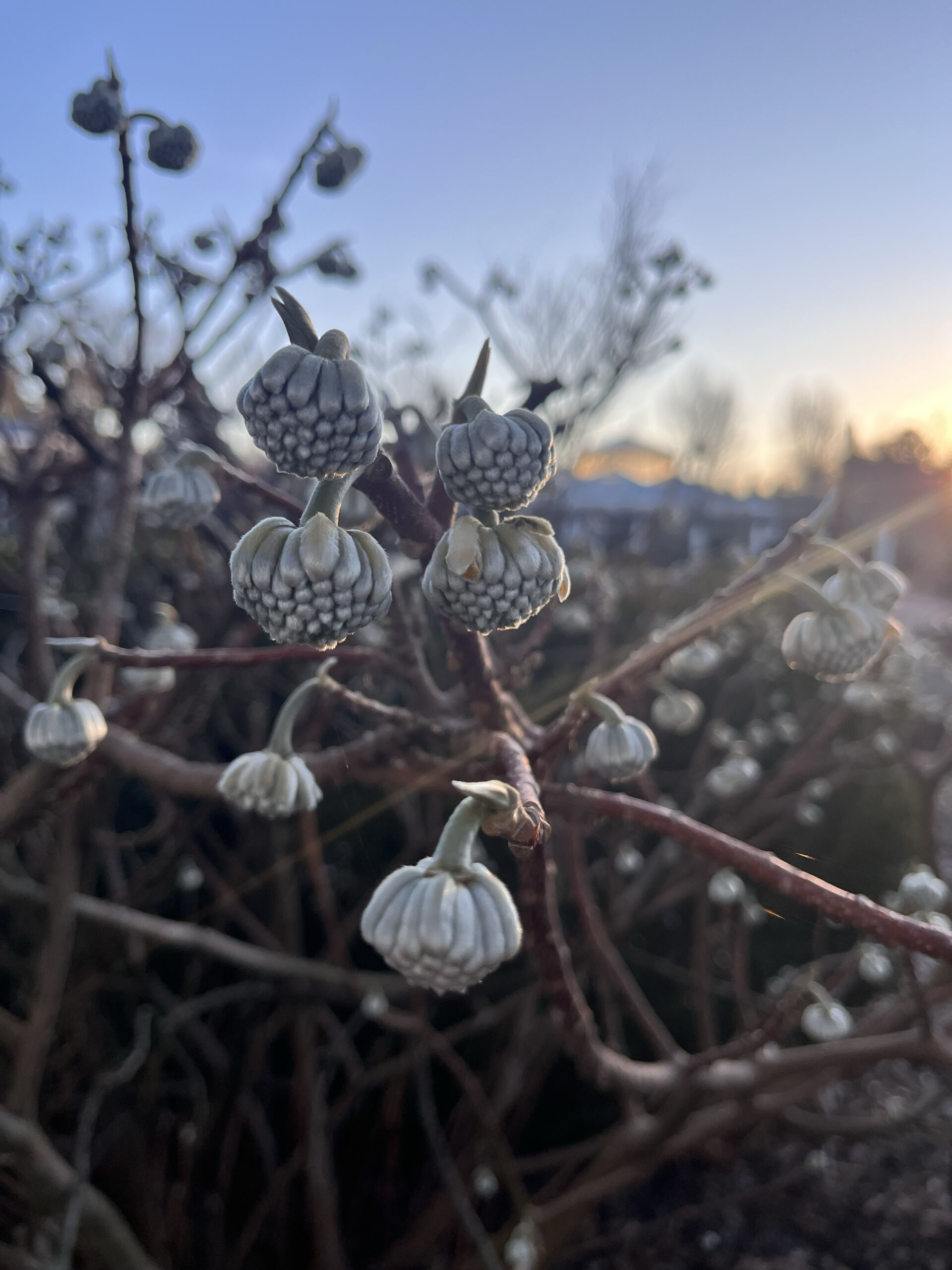
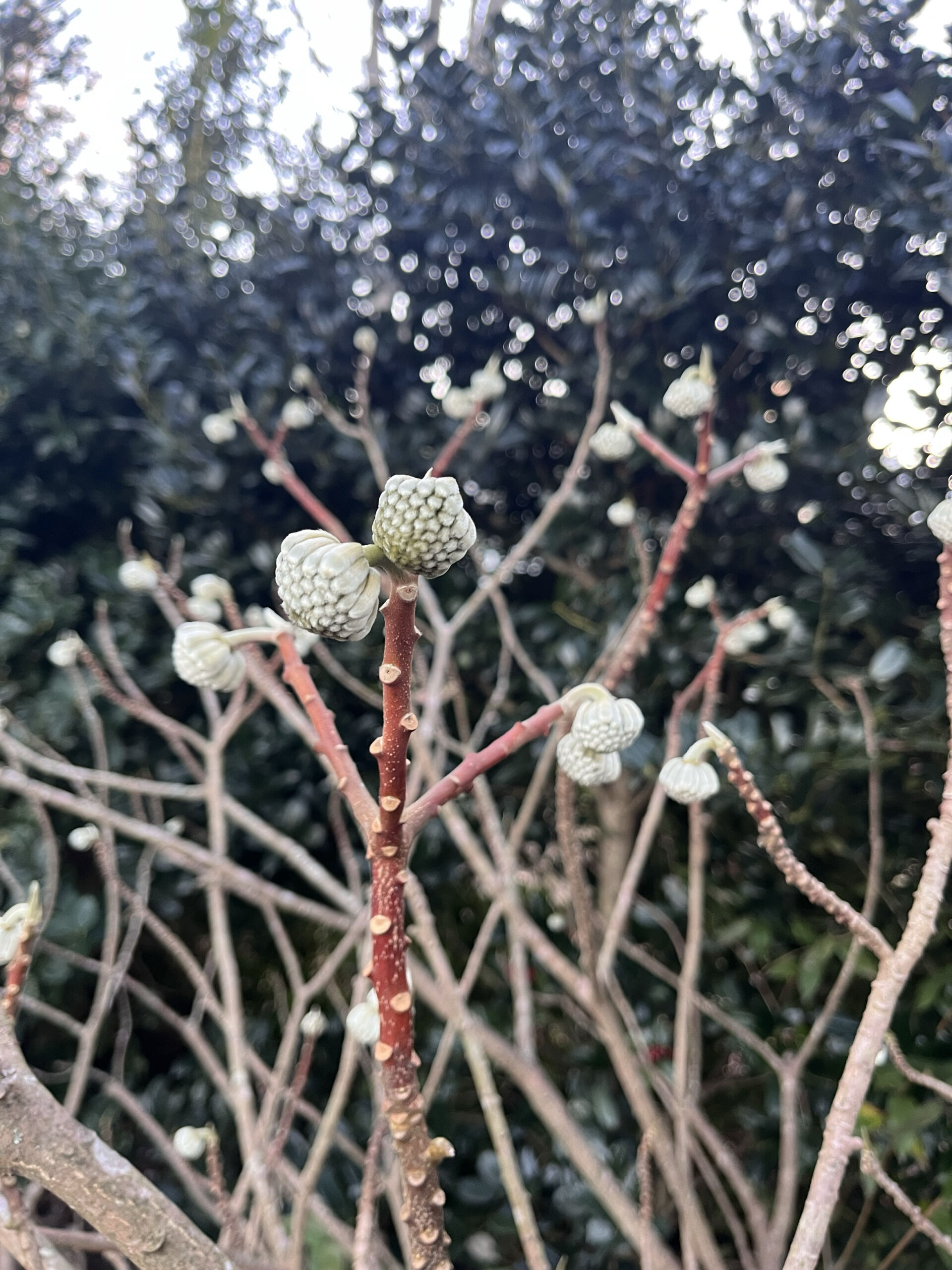
Paperbush (Photos by Allyssa Boergnen, Garden Horticulturist)
Daniel Stowe Botanical Garden during the winter months is not just about what we see; it’s also about what we don’t see. Birds, small mammals and even insects find shelter in the plants and trees. So next time the weather turns chilly, throw on a coat and boots and come explore the beauty of nature of the Garden in the winter.


